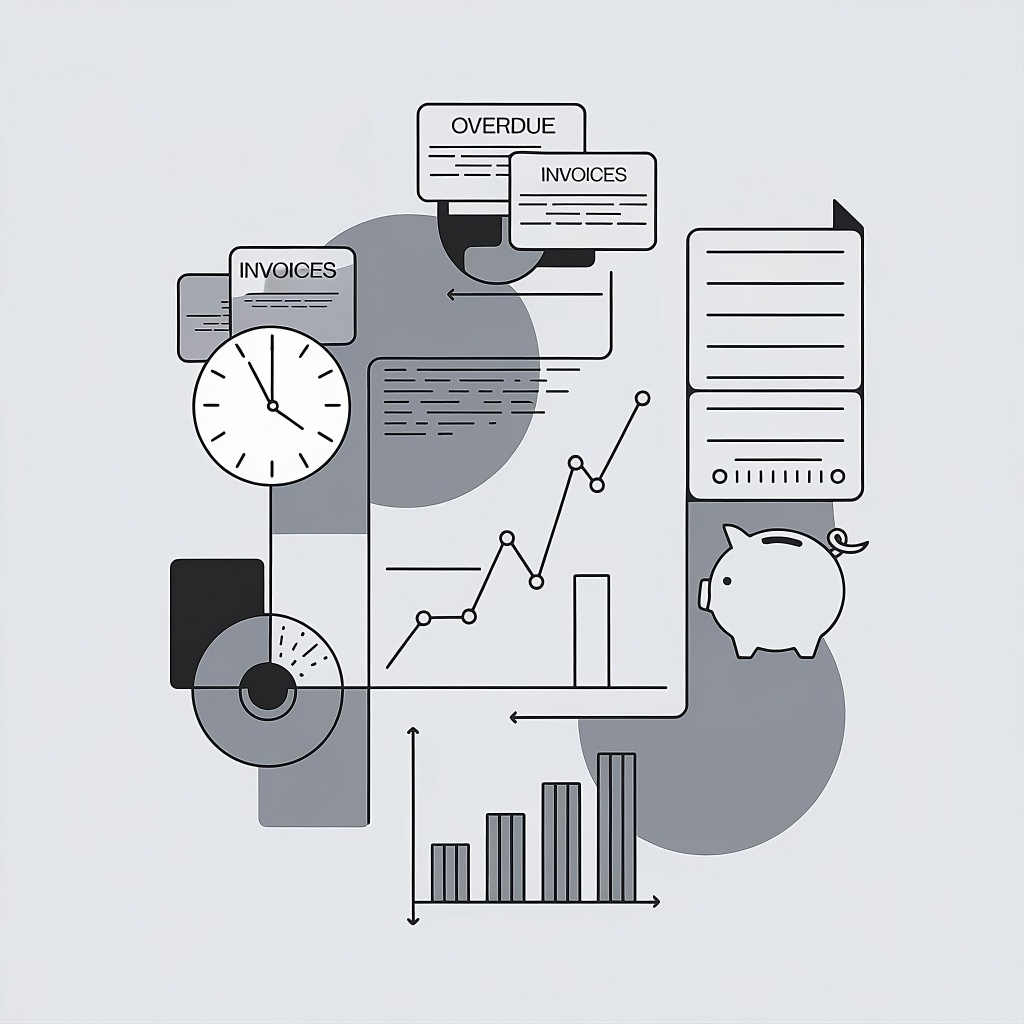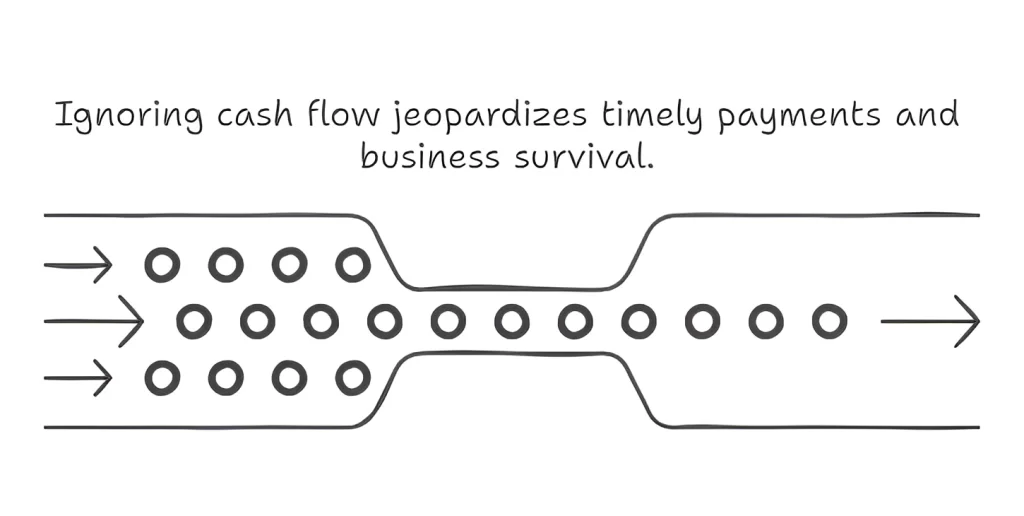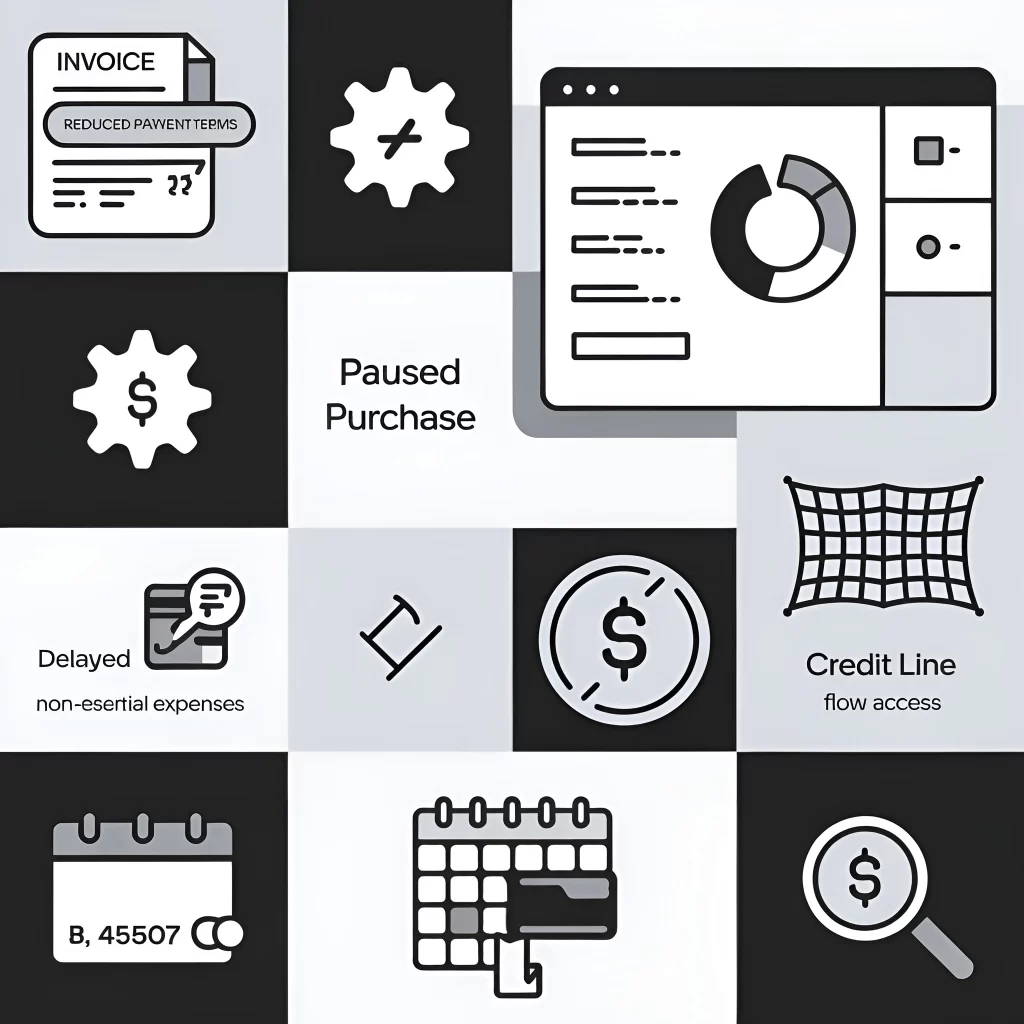What is a cash flow problem you ask? You’re making sales, invoices are piling up, but somehow your bank account still feels like a deflated balloon.
What’s going on? It’s not about how much money your business makes but about how that money moves. This, my friend, is where cash flow problems come into play.
Most entrepreneurs think cash flow issues arise because they’re not earning enough. Wrong. Even profitable businesses can struggle with cash flow, and understanding why this happens could mean the difference between thriving or shuttering your doors.
What Is a Cash Flow Problem?
A cash flow problem occurs when more money is going out of your business than coming in. It’s not about how much you earn overall—it’s about timing. Think of cash flow as a balancing act: if your bills are due before your customers pay you, you’re in trouble.
For example, let’s say you close a big deal that’ll bring in $50,000. Amazing, right? But if the client’s payment terms are 60 days and your rent, payroll, and supply costs are due tomorrow, that money might as well be Monopoly cash.
This is the essence of a cash flow problem: having revenue on paper but no actual money in hand.
What’s Your Cash Flow Forecast?
How Cash Flow Problems Differ From Low Revenue
Here’s a common misconception: cash flow problems only happen when you’re not making enough money. Nope. A business can have booming sales and still struggle to pay its bills if money isn’t flowing correctly.
The distinction lies in timing. Revenue is a snapshot of your earnings over a specific period, while cash flow is about the rhythm of money moving in and out.
Take this example:
- Business A generates $100,000 monthly but has slow-paying customers.
- Business B generates $50,000 monthly but collects payments promptly. Guess which business is more likely to survive? Business B, because reliable cash flow beats high revenue when it comes to keeping the lights on.

Common Causes of Cash Flow Problems
Let’s get specific. Here are the usual suspects causing cash flow headaches:
- Late Customer Payments
- Waiting 30, 60, or even 90 days for payments can wreak havoc. Late payments turn expected revenue into a waiting game.
- Seasonal Sales Fluctuations
- If your business thrives during specific months, the off-season can feel like an endless drought.
- Poor Expense Management
- Paying bills too early or misjudging when to make big purchases can drain your cash reserves.
- Lack of Financial Forecasting
- Without a roadmap, you might be caught off guard by expenses or dips in revenue.
These issues are common but manageable. The key is identifying the root cause early.
Why Entrepreneurs Overlook This Key Issue
So why do so many entrepreneurs miss the mark when it comes to cash flow? The short answer: they’re focused on profit.
Profit is flashy. It’s what you tell your investors, brag about at networking events, and celebrate at the end of the year. Cash flow? That’s the unglamorous cousin of profit—the one quietly doing the hard work of keeping your business alive.
The numbers back this up. According to FP&A Trends citing a U.S. Bank study, 82% of business failures stem from cash flow mismanagement. Many entrepreneurs equate profit with financial health, failing to recognize that profit is just a part of the bigger picture.
While profit shows you’re generating income, cash flow determines whether you can pay your bills, employees, and vendors on time.
One real-life example comes from the restaurant industry. Many eateries operate on razor-thin margins and rely heavily on consistent cash flow to cover operational costs.
A profitable restaurant can still shut down if suppliers demand payment before customers’ credit card transactions clear. This scenario played out during the pandemic when delayed payments and sudden expenses forced even thriving businesses to close their doors.
The “illusion of financial health” is especially pervasive among startups. New business owners might pour over revenue reports and pat themselves on the back for a successful quarter, ignoring the unpaid invoices piling up. In reality, their business is one unexpected expense away from a financial crisis.
Another reason cash flow gets overlooked is emotional. Entrepreneurs often see profit as a validation of their hard work. Talking about cash flow feels less celebratory and more “back-office.”
It’s not the kind of thing you post on LinkedIn or share in a pitch meeting. But here’s the kicker: cash flow issues are just as important to investors as profits. A venture capitalist quoted in Forbes explains, “We’re looking for businesses with good liquidity management because even the best ideas can fail if the founders can’t keep the lights on.”

One striking example involves a thriving ecommerce company that doubled its revenue year-over-year. The founder, confident in the company’s profitability, took out a sizable loan to invest in inventory ahead of a major sales season.
But payment delays from retailers caused a cash crunch, leaving them unable to cover loan payments. Despite being “profitable,” the business nearly collapsed. This underscores the importance of understanding that revenue doesn’t equal readiness.
Experts like Barbara Weltman, author of “J.K. Lasser’s Small Business Taxes,” stress the importance of cash flow awareness. Weltman advises entrepreneurs to treat cash flow as a daily metric rather than a quarterly task. “Think of cash flow as oxygen for your business,” she says. “You can’t wait until you’re gasping to pay attention.”
The bottom line? Entrepreneurs often overlook cash flow because they’re blinded by profit. But as the stats, stories, and expert advice show, managing cash flow effectively is what keeps businesses alive when profits are delayed or expenses spike.
Recognizing this early can save you from joining the 82% of businesses that fail due to cash flow mismanagement.

Simple Fixes for Cash Flow Problems
The good news? You can address cash flow problems with a few practical steps:
- Tighten Your Invoicing Terms
- Reduce payment windows from 60 days to 30 days or offer discounts for early payments.
- Use Cash Flow Forecasting Tools
- Software like QuickBooks, FreshBooks, or Cash Flow Frog can give you a clear view of your financial future.
- Delay Non-Essential Expenses
- If payments from clients are running late, hold off on making new purchases or paying invoices early.
- Open a Line of Credit
- Having access to a credit line ensures you have a safety net for emergencies.
- Track Cash Flow Regularly
- Make it a weekly or monthly habit to monitor your cash flow statement.
With these strategies, you can take control of your business finances and avoid getting blindsided.
Wrapping It Up
Cash flow problems aren’t just about how much money you’re bringing in—they’re about how effectively you manage the movement of that money. Even a profitable business can hit rock bottom if cash isn’t available when it’s needed most.
That’s why it’s crucial to go beyond simply growing your revenue. Focus on understanding and optimizing how money flows in and out of your business. With a bit of planning and the right strategies, you can keep your cash flow running as smoothly as a finely tuned engine.
At 7 Figure Fast Track, we’re all about helping entrepreneurs take control of their finances and build unstoppable momentum. Ready to take charge? Start here.
FAQ
1. What’s the easiest way to track cash flow?
Use tools like QuickBooks, FreshBooks, or even a basic spreadsheet to record all incoming and outgoing transactions regularly.
2. Can profitable businesses go bankrupt due to cash flow problems?
Yes, because profits are long-term, while cash flow reflects immediate availability of funds to cover expenses.
3. How often should I review my cash flow?
Ideally, review it weekly or monthly, depending on your business size and complexity.
4. Are there apps to help manage cash flow?
Yes! Popular options include FreshBooks, Wave, and Cash Flow Frog. They’re user-friendly and offer valuable insights into your finances.
You’re about to become an unstoppable entrepreneurial force. Go get ’em!
Disclaimer: Some of the links on this page are affiliate links, which means we may earn a small commission if you make a purchase through them, at no extra cost to you. We only recommend products and services that we believe will benefit you.


